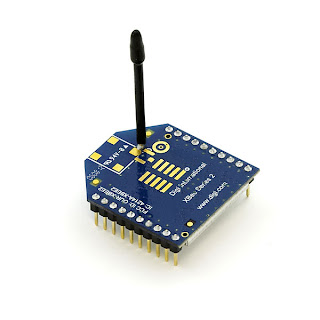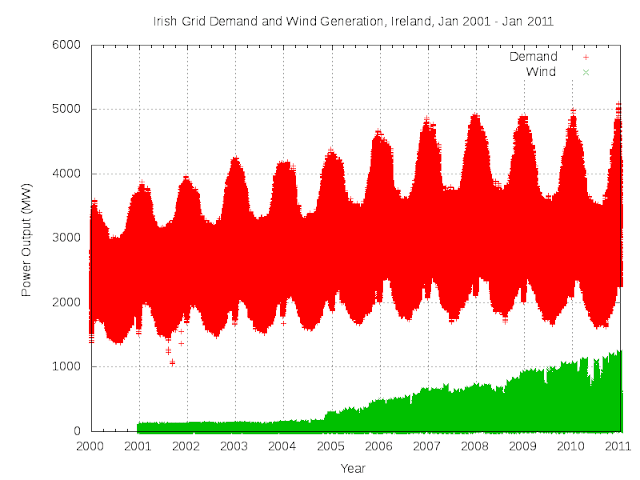Summary: this post explains to send remote AT commands to an XBee module using ZigBee commands. The end point, profile ID, cluster ID and command and response format is documented. This is useful if you need to control a XBee's IO lines from a non-XBee device.
 |
| The Digi XBee Series 2 module. |
The modules are configured and controlled by AT commands (like the modems of old) which are issued through the module's UART by a computer or microcontroller. There are two varieties of the firmware: AT mode and API mode. The latter provides access to more advanced features of the module.
One feature of the API mode is the ability to send AT commands to remote XBee modules. This can be used to control relays, read the state of switches, read temperature etc. This in theory allows many small control applications to be accomplished with nothing more than a XBee module on it's own -- no need for an attached microcontroller.
There is a problem however. All the examples and documentation I've seen to date (I may very well have missed something, but not for the lack of trying) only cover controlling a XBee module through the XBee API. So if your interface to the ZigBee network is not a XBee (or equivalent Digi product) you're out of luck. In my case I have a Texas Instruments CC2530 based USB dongle and I require that software running on a computer control the state of a remote XBee's IO lines.
So, reverse engineering time! I wrote scripts to control the XBee digital IO lines from another XBee, and simultaneously ran a 802.15.4 packet sniffer. This is what I learned:
For remote AT commands the sending XBee issues a ZigBee command to the remote XBee on endpoint 230 (0xE6), with profile 0xC105 (Digi private profile), cluster 0x0021. The command is formatted as follows:
0x00, 0x32, 0x00, frame-id, sender-ieee-addr, 0x00, 0x00, atcmd0, atcmd1, [param]
frame-id: one byte API frame ID used in many XBee API calls
sender-ieee-addr: the 64 bit IEEE address (8 bytes, the most significant byte first)
atcmd0: the ASCII code of first character of the AT command (eg 0x4d or 'M' if command is ATMY)
atcmd1: the ASCII code of the second char of the AT command (eg ...)
params: zero, one or more optional parameter bytes
For example: to send ATMY (get 16 bit network address) the command will be:
0x00, 0x32, 0x00, 0x0f, 0x00, 0x13, 0xa2, 0x00, 0x40, 0x3c, 0x15, 0x5c, 0x00, 0x00, 0x4d, 0x59
The bytes with values 0x00 and 0x32 may have some significance, but I have no idea what it might be. I'm not sure if the sender IEEE address is important. It seems to work the same no mater what address I use.
Responses are sent on cluster 0x00a1. In response to the ATMY command I get:
0x0f, 0x4d, 0x59, 0x00, 0xd1, 0xed
So that seems to be:
frame-id, atcmd0, atcmd1, 0x00, atresponse...
The XBee digital IO lines are configured with the ATDn commands, where 'n' is the number of the IO line. The lines can be configured as input, output low, output high, analog and PWM (not all lines are capable of all the functions). The two functions that are of interest to me are output high (parameter value 5) and output low (parameter value 4).
Note: there is potential for some confusion encoding AT commands. Take for example the command ATD04. What this means is AT command D0 with parameter 4. The digit 0 in the command part is encoded as the ASCII code ie 0x30, but the digit in the parameter part (4) is the byte value 0x04. So the command and parameters is encoded as 0x44, 0x30, 0x04.
Other clusters in endpoint 230 have other functions, which I'll document in another post.
Update (2 Oct 2011): Small edit. I omitted the frame-id in the format of the AT command response.




